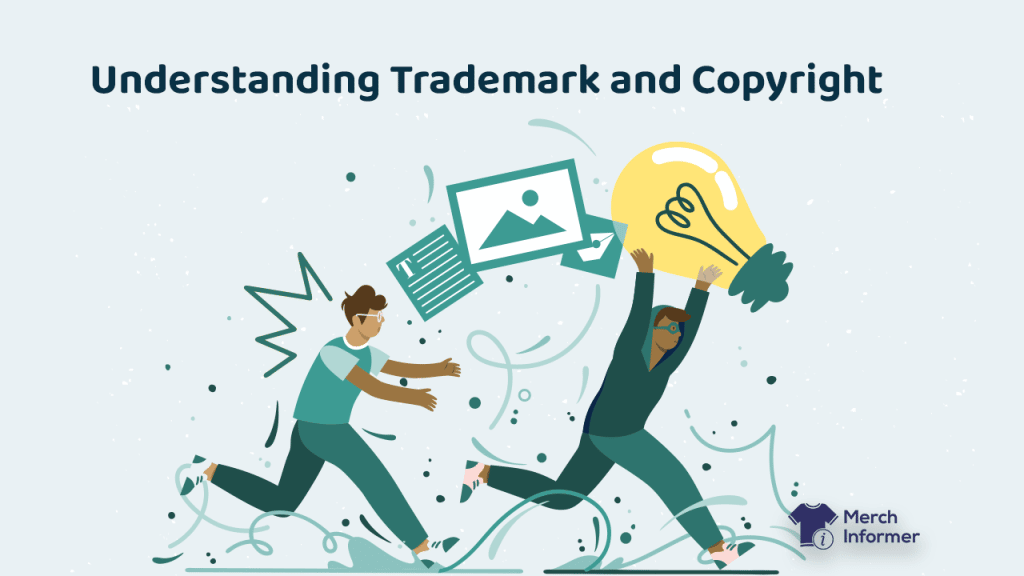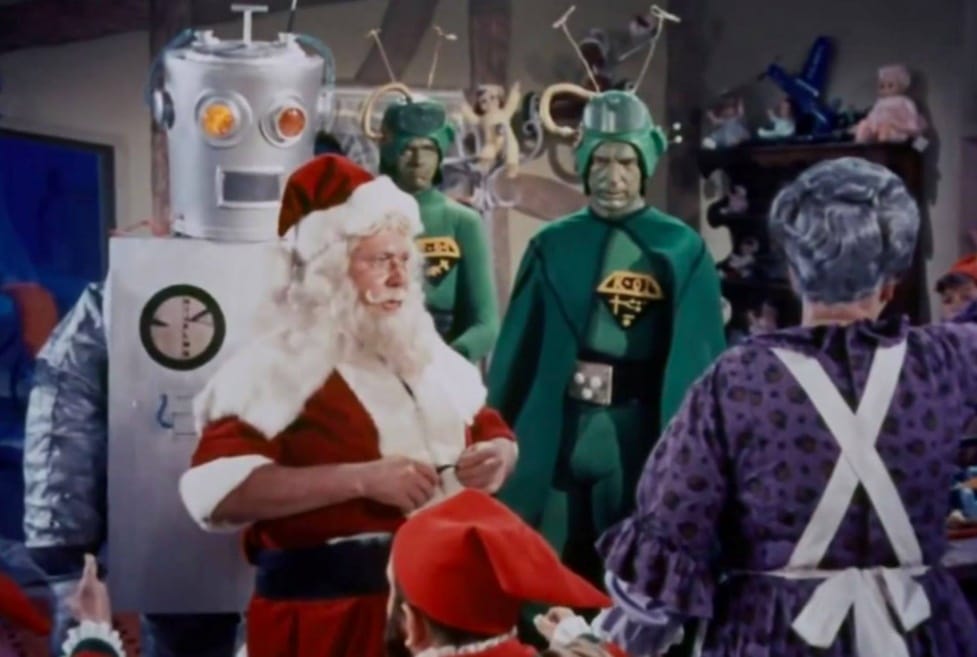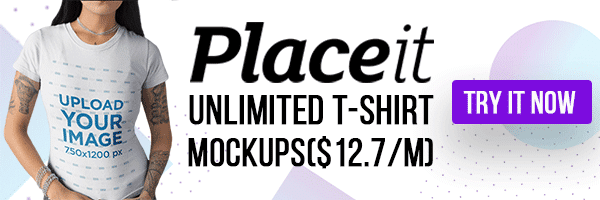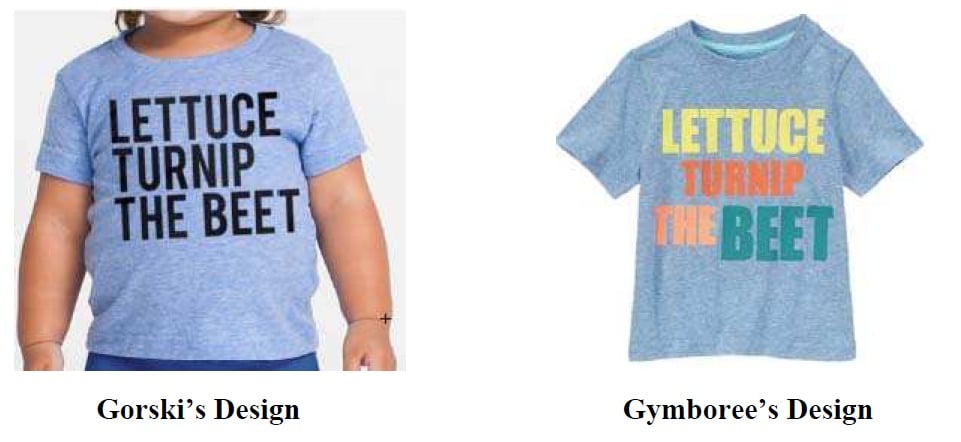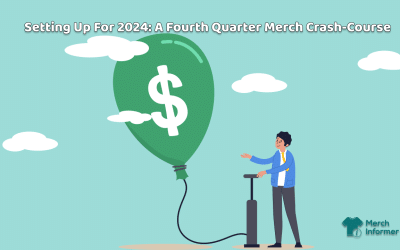Amazon Merch on Demand – Understanding Trademark and Copyright
In your quest to deliver quality designs to the print on demand market, you may have come across designs that you want to use but are unsure of using them because they are made by someone else. This is a good way of looking at it as your original ideas will always be yours without conflict. But sometimes we deliver products based on the work of others and it all falls into a grey area of what is permitted and what is clearly not.
One of the worst aspects of being a print on demand seller is losing your Merch By Amazon account due to trademark breaches, and the tough part is that comprehending trademarks and copyrights can be very complex at times, especially if you’re just starting out.
So, What Exactly Is a Copyright?
A copyright is a type of intellectual property that grants the owner the exclusive right to copy, distribute, adapt, exhibit, and perform a creative work for a specific period of time. The creative effort could be literary, artistic, educational, or musical in nature. The purpose of copyright is to protect the original expression of an idea in the form of a creative work, not the concept itself. A copyright is subject to public interest limits, such as the fair use doctrine in the United States.
Some governments require copyrighted works to be “fixed” in a tangible form. It is frequently shared by numerous writers, each of whom has a set of rights to use or license the work and is referred to as a “rights holder”. These rights usually encompass reproduction, attribution, who has control over derivative works, distribution, and public performance. Copyrights can be awarded by public law and are then referred to as “territorial rights.” This means that copyrights issued by a state’s statute do not extend beyond the boundaries of that state’s jurisdiction. Many countries, and often a large group of countries, have signed agreements with other countries on processes to be followed where works “cross” national borders if national rights are conflicting.
( A still from “Santa Claus Conquers The Martians”, a film in the “public domain”)
Depending on the jurisdiction, the public law lifespan of a copyright often expires 50 to 100 years after the creator’s death. Some countries require specific copyright procedures to establish copyright, whereas others accept copyright in any completed work without requiring a formal registration. When a work’s copyright expires, it enters the public domain. This is why you will see songs written over a century ago be re-recorded today for use in commercial work, films, video games, etc. They belong to society as a whole at this point.
Post-1978 Copyright Law Changes
Copyright law in the US has changed a lot since 1978 when new rules went into effect. Today, the moment you create something unique, you own it. Proving ownership might be the difficult part if you also do not register it in documented proof, but when you make something, you own the rights to it. Take a picture, that image is yours. Design a t-shirt? It’s your design.
So, what does this all mean in practical terms to you? You can get inspiration from an existing design, art has a long history of this; this is how art evolves. Being inspired by something to make something similar is one thing, copying it outright and making the slightest change to try to bypass copyright is very much another. Of course a one-for-one perfect copy is also right out. Those types of things are likely to get you a copyright hit and get your store taken down. And no one wants that.
Avoiding this is simple: just create your own work. That way, it’s always yours and there is no possible conflict. The other thing you can do is research what falls into the above category of “public domain”. Those designs and content are available to you since they are available to us all, and you can do as you wish with them without limit. Just do not confuse “public domain” with “creative commons”, as content in the creative commons world often comes with licensing restriction on use. Public Domain is an entirely different thing and truly free of restriction. You also have the option of paying for usage rights from artists, and this is done all the time. There are various sites where you can get such things, such as inside of Merch Informer! That way you get exactly what you want and do not have to worry as the agreement is in place.
Trademarks – Not the Same As Copyrights
Something else you might have come across is concerns of “trademarks”. Trademarks are usually either a set logo or a catchphrase that is uniquely linked to a brand or a product. These images and phrases are registered and cannot be used in the same way to promote your product or to be used as something you can sell. Unlike copyright, a trademark is not something that happens automatically at the time of creation; they are formally and legally registered items and different countries have different rules governing them and how far they extend.
But can you still come close without crossing the line? Yes, you can, but it will always be a potential strike against your shop or account. Above you can see two designs that are very similar, yet different enough where it’s not a direct copy. It is close? Yes. Is it iffy is someone really wanted to make a case of it? Possibly. We’re not suggesting one way or the other, only pointing out that you can run into some issues if you follow this path. People do it, and they do it all the time. But none of them would have to worry if they just took the time to create their own work and their own designs from the start.
This is your business. YOUR business. And you are the one who ultimately has to make it work for yourself. If you’re serious about this and want your store to be safe from any issues, your path is clear.
